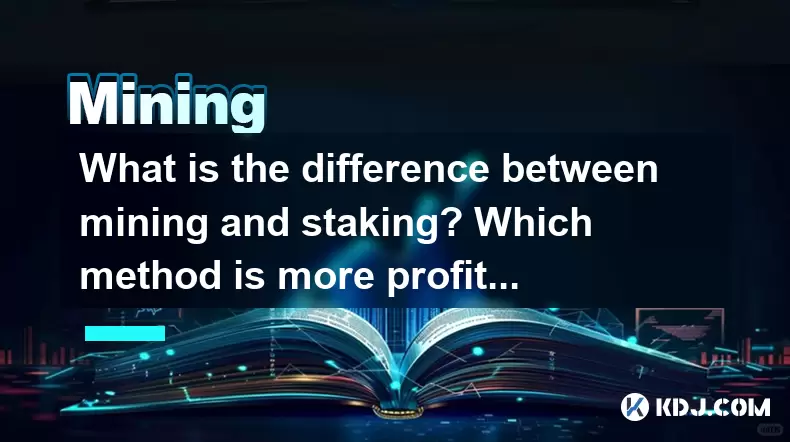-
 Bitcoin
Bitcoin $115200
-2.68% -
 Ethereum
Ethereum $3601
-5.16% -
 XRP
XRP $3.035
-2.96% -
 Tether USDt
Tether USDt $0.9997
-0.04% -
 BNB
BNB $764.5
-5.43% -
 Solana
Solana $168.1
-5.92% -
 USDC
USDC $0.9998
-0.02% -
 Dogecoin
Dogecoin $0.2090
-4.80% -
 TRON
TRON $0.3272
-0.49% -
 Cardano
Cardano $0.7306
-5.00% -
 Hyperliquid
Hyperliquid $39.16
-12.22% -
 Stellar
Stellar $0.3967
-4.96% -
 Sui
Sui $3.566
-5.95% -
 Chainlink
Chainlink $16.55
-6.57% -
 Bitcoin Cash
Bitcoin Cash $552.3
-3.90% -
 Hedera
Hedera $0.2516
-4.69% -
 Avalanche
Avalanche $21.99
-5.75% -
 Toncoin
Toncoin $3.621
-0.28% -
 Ethena USDe
Ethena USDe $1.000
-0.03% -
 UNUS SED LEO
UNUS SED LEO $8.951
0.02% -
 Litecoin
Litecoin $105.9
-3.59% -
 Shiba Inu
Shiba Inu $0.00001232
-5.00% -
 Polkadot
Polkadot $3.640
-5.55% -
 Uniswap
Uniswap $9.048
-7.03% -
 Monero
Monero $301.8
-1.51% -
 Dai
Dai $0.9999
-0.01% -
 Bitget Token
Bitget Token $4.334
-3.66% -
 Pepe
Pepe $0.00001064
-6.17% -
 Cronos
Cronos $0.1367
-5.78% -
 Aave
Aave $259.2
-4.59%
What is the difference between mining and staking? Which method is more profitable?
Mining uses energy-intensive hardware to solve problems and add blocks to PoW blockchains, while staking involves locking up cryptocurrency to validate transactions on PoS networks.
May 10, 2025 at 04:07 pm

Mining and staking are two distinct methods used within the cryptocurrency ecosystem to participate in and secure blockchain networks, while also earning rewards. While both methods aim to validate transactions and add them to the blockchain, they operate on different principles and have different requirements. In this article, we will explore the differences between mining and staking, and discuss which method might be more profitable.
How Does Mining Work?
Mining is the process used primarily in Proof of Work (PoW) blockchains like Bitcoin and Ethereum (prior to its transition to Proof of Stake). Miners use specialized hardware to solve complex mathematical problems. The first miner to solve the problem gets to add a new block of transactions to the blockchain and is rewarded with newly minted cryptocurrency and transaction fees.
- Hardware Requirements: Miners need powerful computers, often ASICs (Application-Specific Integrated Circuits), which are designed specifically for mining.
- Energy Consumption: Mining is highly energy-intensive because of the computational power required to solve the problems.
- Decentralization: The mining process helps maintain the decentralization of the network, as anyone with the necessary hardware can participate.
How Does Staking Work?
Staking, on the other hand, is used in Proof of Stake (PoS) blockchains, such as Ethereum after its upgrade and other cryptocurrencies like Cardano and Tezos. Instead of solving mathematical problems, participants in a PoS system lock up a certain amount of their cryptocurrency as a stake. They are then chosen to validate transactions and create new blocks based on the amount of cryptocurrency they have staked and sometimes other factors like the length of time they have held the stake.
- Hardware Requirements: Staking typically requires less specialized hardware. Often, a regular computer or even a smartphone can be used.
- Energy Consumption: Staking is significantly less energy-intensive than mining, making it a more environmentally friendly option.
- Decentralization: Staking can also contribute to the decentralization of the network, but it is often criticized for potentially favoring those with larger stakes.
Comparing the Profitability of Mining and Staking
Determining which method is more profitable depends on several factors, including the specific cryptocurrency, the cost of hardware and electricity, and the market conditions.
- Initial Investment: Mining requires a significant initial investment in hardware, which can be costly. Staking generally requires less upfront investment, as you mainly need to hold the cryptocurrency.
- Ongoing Costs: Mining has high ongoing costs due to electricity consumption. Staking has minimal ongoing costs, mainly related to the opportunity cost of locking up your cryptocurrency.
- Reward Structure: Mining rewards are often more predictable but can fluctuate with the difficulty of the network. Staking rewards can vary based on the amount staked and the specific rules of the blockchain.
Factors Affecting Profitability
Several factors can influence the profitability of both mining and staking:
- Cryptocurrency Price: The value of the cryptocurrency you are mining or staking directly affects your profits. If the price rises, your rewards become more valuable.
- Network Difficulty: For mining, the difficulty of solving the mathematical problems can increase, reducing the frequency of rewards. For staking, the number of participants and the total amount staked can affect your chances of being chosen to validate transactions.
- Regulatory Environment: Changes in regulations can impact the profitability of both mining and staking, either by affecting the cost of operations or the legality of the activities.
Practical Considerations for Miners and Stakers
For those considering entering the world of cryptocurrency through mining or staking, there are practical steps to take:
For Miners:
- Research: Understand the specific cryptocurrency you want to mine, including its mining algorithm and the hardware required.
- Hardware Acquisition: Purchase or rent the necessary mining hardware, ensuring it is compatible with the cryptocurrency you want to mine.
- Setup: Install the mining software and configure it to connect to the mining pool or directly to the blockchain network.
- Maintenance: Regularly monitor and maintain your mining equipment to ensure optimal performance and longevity.
For Stakers:
- Choose a Cryptocurrency: Select a cryptocurrency that supports staking and aligns with your investment goals.
- Acquire the Cryptocurrency: Purchase the necessary amount of the cryptocurrency to stake.
- Select a Staking Method: Decide whether to stake directly on the blockchain, use a staking pool, or utilize a staking service provided by a cryptocurrency exchange.
- Set Up Staking: Follow the specific instructions for the chosen method, which may involve locking up your cryptocurrency in a wallet or transferring it to a staking pool.
Risks and Challenges
Both mining and staking come with their own set of risks and challenges:
- Mining Risks: The high initial investment and ongoing costs can be a barrier to entry. Additionally, the rapid advancement of mining technology can quickly render your hardware obsolete.
- Staking Risks: The primary risk is the potential for slashing, where a portion of your stake can be lost if you fail to validate transactions correctly. Additionally, the value of your staked cryptocurrency can fluctuate, affecting your overall returns.
Frequently Asked Questions
Q: Can I switch between mining and staking?
A: Yes, you can switch between mining and staking, but it depends on the specific cryptocurrencies you are interested in. Some cryptocurrencies support both mining and staking at different stages of their development, while others are strictly one or the other. You would need to acquire the necessary hardware for mining or the required amount of cryptocurrency for staking, and follow the respective setup processes.
Q: Is it possible to mine and stake at the same time?
A: Yes, it is possible to mine and stake simultaneously, provided you have the resources to do so. You would need to manage both activities separately, ensuring you have the hardware and cryptocurrency required for each. However, this can be complex and requires careful management to maximize profitability.
Q: How do I know if a cryptocurrency is better suited for mining or staking?
A: To determine if a cryptocurrency is better suited for mining or staking, you should research its consensus mechanism. If it uses Proof of Work (PoW), it is designed for mining. If it uses Proof of Stake (PoS), it is designed for staking. Additionally, consider factors such as the cryptocurrency's market position, the potential for future upgrades, and the community's support for the chosen method.
Q: Are there any legal considerations I should be aware of when mining or staking?
A: Yes, there are legal considerations to be aware of when mining or staking. Regulations can vary by country and can affect the legality of mining and staking, the taxation of rewards, and the reporting requirements. It is important to research and comply with the laws in your jurisdiction to avoid legal issues.
Disclaimer:info@kdj.com
The information provided is not trading advice. kdj.com does not assume any responsibility for any investments made based on the information provided in this article. Cryptocurrencies are highly volatile and it is highly recommended that you invest with caution after thorough research!
If you believe that the content used on this website infringes your copyright, please contact us immediately (info@kdj.com) and we will delete it promptly.
- Dogecoin's Price Support Under Fire: Can It Fend Off Competitors?
- 2025-08-02 04:30:12
- AI Cloud Mining: How AIXA Miners is Empowering Young Investors
- 2025-08-02 04:30:12
- Crypto Spotlight: Rollblock's Rise, Ripple's Resistance, and What It Means for Your Portfolio
- 2025-08-02 04:50:12
- Crypto's Golden Age: Tether Gold, Institutional BTC, and the Future of Finance
- 2025-08-02 04:50:12
- VeChain, Unilabs, XRP: Decoding August's Crypto Moves
- 2025-08-02 04:55:43
- Bitcoin, Whales, and Profit: Decoding Crypto's Latest Moves
- 2025-08-02 04:55:43
Related knowledge

What was the highest APY for IRON mining?
Jul 23,2025 at 05:14am
Understanding IRON Token and Its Mining MechanismThe IRON token is a stablecoin that operates within the Iron Finance ecosystem, primarily on blockcha...

What is impermanent loss in IRON pools?
Jul 23,2025 at 09:00am
Understanding Impermanent Loss in the Context of IRON PoolsImpermanent loss is a phenomenon that affects liquidity providers in decentralized finance ...

How to claim rewards from IRON mining?
Jul 23,2025 at 02:21pm
Understanding IRON Mining and Reward MechanismsIRON Finance operated as a decentralized finance (DeFi) protocol on the Polygon and Binance Smart Chain...

How to claim rewards from IRON mining?
Jul 29,2025 at 05:07am
Understanding IRON Mining and Reward MechanismIRON is a dual-token system designed to stabilize the value of a synthetic asset through a combination o...

IRON mining tutorial for beginners
Jul 27,2025 at 12:01am
What Is IRON and How Does It Work in the Cryptocurrency Ecosystem?IRON is a cryptocurrency token that operates on the Binance Smart Chain (BSC) and is...

How to calculate APY for IRON mining?
Jul 28,2025 at 09:49am
Understanding APY in the Context of IRON Token MiningWhen engaging in IRON token mining within decentralized finance (DeFi) platforms, Annual Percenta...

What was the highest APY for IRON mining?
Jul 23,2025 at 05:14am
Understanding IRON Token and Its Mining MechanismThe IRON token is a stablecoin that operates within the Iron Finance ecosystem, primarily on blockcha...

What is impermanent loss in IRON pools?
Jul 23,2025 at 09:00am
Understanding Impermanent Loss in the Context of IRON PoolsImpermanent loss is a phenomenon that affects liquidity providers in decentralized finance ...

How to claim rewards from IRON mining?
Jul 23,2025 at 02:21pm
Understanding IRON Mining and Reward MechanismsIRON Finance operated as a decentralized finance (DeFi) protocol on the Polygon and Binance Smart Chain...

How to claim rewards from IRON mining?
Jul 29,2025 at 05:07am
Understanding IRON Mining and Reward MechanismIRON is a dual-token system designed to stabilize the value of a synthetic asset through a combination o...

IRON mining tutorial for beginners
Jul 27,2025 at 12:01am
What Is IRON and How Does It Work in the Cryptocurrency Ecosystem?IRON is a cryptocurrency token that operates on the Binance Smart Chain (BSC) and is...

How to calculate APY for IRON mining?
Jul 28,2025 at 09:49am
Understanding APY in the Context of IRON Token MiningWhen engaging in IRON token mining within decentralized finance (DeFi) platforms, Annual Percenta...
See all articles

























































































